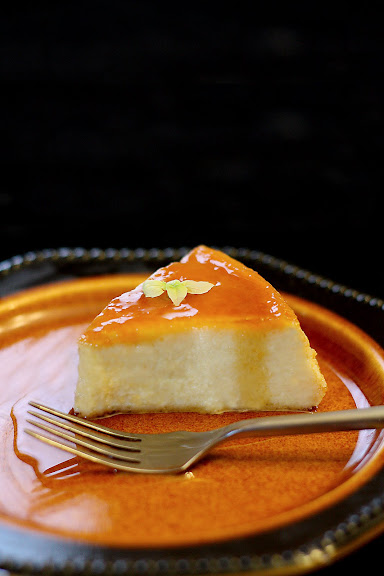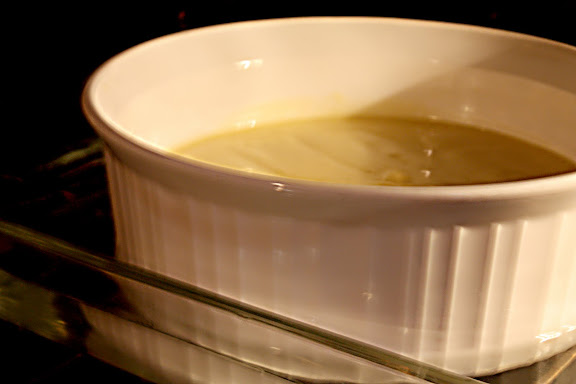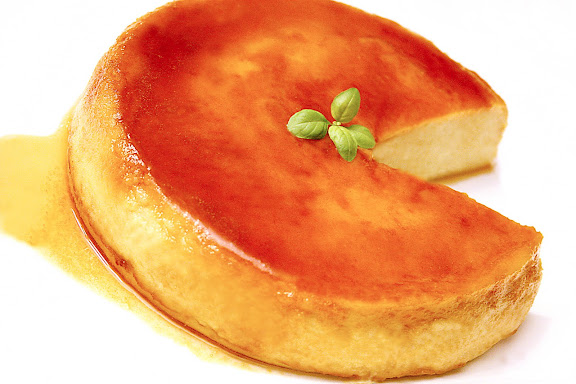
“Can I give you a word of advice?” my cabbie said to me as we were approaching my destination, Central World, a huge mall in the center of Bangkok. “Of course,” I said. After over an hour of discussing every topic imaginable, from the state of the country to the state of his dermatological and prostate health, our bond, at that point, was stronger than titanium. “I noticed when I picked you up that you were carrying your purse on your right shoulder,” he assumed a parental role now. “It’s better to carry it on your left shoulder when you walk in the same direction as the traffic like you did. That way, it’s harder for the thieves on motorcycles to snatch it from you.” In a left-hand traffic country like Thailand, this makes perfect sense.
That was not the first time I learned something valuable from Bangkok taxi drivers. It would not be the last.

All photographs of Dale Konstanz by Jason Tonio WoernerThere weren’t many taxi rides for me growing up, but when I visit Bangkok, my hometown, these days, taxi is my preferred mode of transportation. The Sky Train and subway are for the times when I’m really in a rush. It’s not that I like getting stuck in traffic;
it’s just that I enjoy interacting with taxi drivers whose lives are often drastically different than mine.
Though my globetrotting life began since I was – literally – in diaper, ironically the small, confined spaces inside Bangkok taxis remain some of a very few places wherein the deepest and richest learning experiences occur. The vast majority of taxi drivers in Bangkok are from economically-disadvantaged provinces, bringing with them experiences and stories that a city-dweller like me, unless blessed with opportunities to engage in meaningful conversations with them, would only know of through the media.
 Dale Konstanz, an American who lives and works in Bangkok, shares my sentiment. Still Life in Moving Vehicles is an excellent blog where he brings to your computer screen the curious and wildly amusing world inside Bangkok taxis. Ever since Dale rode in his first taxi in Bangkok six years ago, he has been fascinated by what he sees inside local cabs. “Amazing” is how he describes the various collections of religious and superstitious charms, the quintessential พวงมาลัย (fresh flower garlands offered to the gods), the personal photographs and effects of the driver, and the random stickers and knick-knacks.
Dale Konstanz, an American who lives and works in Bangkok, shares my sentiment. Still Life in Moving Vehicles is an excellent blog where he brings to your computer screen the curious and wildly amusing world inside Bangkok taxis. Ever since Dale rode in his first taxi in Bangkok six years ago, he has been fascinated by what he sees inside local cabs. “Amazing” is how he describes the various collections of religious and superstitious charms, the quintessential พวงมาลัย (fresh flower garlands offered to the gods), the personal photographs and effects of the driver, and the random stickers and knick-knacks.
Even before he started blogging, Dale began taking photos inside Bangkok taxis as he started taking them regularly to and from the university where he teaches. “It was the perfect opportunity to do something creative and constructive with my time stuck in Bangkok’s infamous traffic jams,” he says.
A competent photographer, Dale carries a small camera with him everywhere he goes. His original goal was to create a body of work to be exhibited in art galleries and possibly a photo book. He also thought more research was necessary as the photos needed written descriptions and stories to give viewers more insight into the objects and experiences in the taxis.
Later, with an encouragement of a writer friend, Dale started blogging with his photos as a way to further document his experiences inside the cabs as well as a method to organize his thoughts, research, and the photos. He also thought it would be a fun way to share his photos and stories with others.
Dale was right. I, for one, was hooked the first day I discovered his delightful blog.
I find the way Dale looks at things inside Bangkok taxis to be refreshingly childlike. Children notice things which adults often take for granted. Children find wondrous the things which we find mundane. Out of playfulness and vibrant imagination rather than irreverence, they see humor in things we consider sacred. They see (and point out) the absurdity in what makes perfect sense to us. And, as anyone who has been around children for any length of time would tell you, they ask questions – probing, innocent, unedited questions. Their indefatigably curious minds just want to know and reasons behind everything are never irrelevant to them.

This is not to say that Dale is juvenile in his worldview. Far from it. It’s just that I believe adopting a childlike attitude when one is a foreigner in a land/culture different from one’s own is what facilitates the learning and adaptation. It’s almost like being incarnated into a different world, at a risk of sounding absurd.
The best students of a foreign language or culture, from my observation, are often the ones who take on the traits of a child: highly observant, curious, and eager to learn from anyone and about anything. From what I’ve seen of Dale’s blog and the little I know of him as a person, I think he’s not only surviving, but thriving as a foreigner in a very quirky city like Bangkok, his struggle with the different tones in the Thai language notwithstanding.
“I had always wanted to live abroad,” says Dale. From an early age, he’s been attracted to other cultures and often befriended foreigners when he lived in the States. A few years before his very first trip to Asia, Dale had bought an old edition of the Lonely Planet Thai Phrase Book at an estate sale. Whether it was a premonition of sorts or a coincidence, he had no clue at that time he would soon be offered a position to teach art-related courses at a university in Bangkok on a 9-month contract. Neither did he know that 9 months would eventually turn into 6 years and counting.

Looking at my own culture through the eye of a foreigner is amusing, enlightening, and humbling. I guess that’s one of the reasons I like Dale’s blog. A foreigner’s perspective often reminds me of the fact that I’ve taken for granted many things in my culture, accepted as truth teachings and tenets that I’ve never fully understood, and regarded as normal things that, upon closer examination, are anything from contradictory to downright absurd.
Allowing the perspective of an outsider — someone who did not grow up in my culture and is impervious to the cultural or creedal indoctrination to which I’m susceptible — to penetrate the arrogant veil of my ignorance has helped increase my awareness. Their questions make me look afresh at the things which I thought I knew only to oftentimes find that I really don’t know them at all.
“I consider the experience of riding in the cabs as well as taking photos to be metaphor for life,” says Dale. “This project, like life itself, is a journey that has taken me to unforeseen places. I’ve met so many interesting people through this project, including the cabbies.” Much of what he has learned, Dale adds, has come directly from the drivers who have taught him about Thailand, Thai beliefs and culture, and even life itself.
Taking photos of religious and superstitious objects in the taxis has caused Dale to think deeper about his own beliefs and philosophies of life.
“There’s an excellent quote from Buddha that I’ve included on the blog that states, ‘It is better to travel well than to arrive‘. I like that statement because it reminds us to live in the moment.”
Too often, Dale observes, we’re focused on the next thing instead of stopping and appreciating the here and now. “I think it’s interesting that photography inherently does that; photography seizes the moment.“

I promised Dale that if he told me what his favorite Thai dish was, I would feature that dish along with the post on him. Khao Mok Gai (ข้าวหมกไก่), a southern delicacy, a Thai-Muslim version of Chicken Biryani, is what he has chosen, not only as his favorite Thai dish, but potentially the dish he would like to have as his last meal on earth.
My initial plan, then, was to make the famous chicken and rice dish. Unfortunately, I am a lazy, wicked, deceptive Thai woman who often changes her mind at the last minute and for no particular reason. Having been craving Thai steamed pumpkin custard, I decided my needs were more important than Dale’s.
His Khao Mok Gai would have to wait.

This panna cotta-filled steamed squash isn’t entirely unrelated to the story, though. Religious syncretism is something that is very apparent in Thailand. In theory, Buddhism, the dominant religion in the kingdom, rests on the teaching of Gautama Buddha. In practice, however, it’s a different story. Superstition, animism, and several practices neither prescribed nor mentioned in the Tripiṭaka, the Buddhist canon, are part of what people generally refer to as the Buddhist faith.
The fact that Buddhism is not a theistic religion in the strictest sense much less monotheistic, in my opinion, has played a big role in the inclusivistic attitude of most Thai buddhists. Seeing the statuettes of Vishnu or Ganesha, an image of Jesus, and animistic amulets together on the same altar along with various statuettes of Buddha is not at all uncommon.
Only the most learned and the most zealous of Buddhists would understand the real teaching of Gautama Buddha; the others seek spiritual guidance and comfort from whatever or whoever they can cling to. What we have here is an inclusive if-one-god-is-good-several-must-be-better belief system that is not endorsed by any one religion.
This dessert demonstrates, for lack of a better term, culinary syncretism. Call it “fusion” or whatever, but here I am borrowing the well-known Italian treat, panna cotta, and using that in lieu of the traditional Thai custard (สังขยา).
Traditionally, the famous Thai steamed pumpkin custard (ฟักทองสังขยา) is made by filling a hollowed out pumpkin with a mixture of eggs, coconut milk, and palm sugar and steaming the whole thing together. While this is not exactly rocket science, I have yet to find one single foolproof recipe. So in the manner of the spiritually-hungry syncretists who borrow gods from various religions, I am borrowing from the Italian their panna cotta to satisfy my unfulfilled hunger for Thai steamed pumpkin custard. This is my own idea which was born out of laziness.

No offense to anyone. Some of the steamed pumpkin custard recipes I have found out there work some of the time, but not a single one of them works all of the time. A one-size-fits-all recipe simply does not take into account the various kinds of squash, steamer, etc. I’ll save my rant for later. For now, suffice it to say that the factors that directly affect the outcome are too numerous. Those who have filled pumpkins explode or collapse on them, or those who have shed tears over shrunken custard once it’s cooled, know what I am talking about.
So what’s great about this panna cotta-filled steamed squash. It is a way of solving the numerous problems that you can run into when you attempt to make the traditional Thai steamed pumpkin custard. Instead of cooking the custard mixture along with the pumpkin, or in this case acorn squash, you steam the hollowed-out squash separately, let it cool, and fill it with panna cotta mixture.
The filled squash is refrigerated to allow the panna cotta to set. Then the filled squash is served and eaten just like you would the traditional Thai steamed pumpkin custard. The panna cotta filling is soft, jiggly, delicious, and goes very well with mildly-sweet flesh of steamed squash.

Granted, what you get here is not exactly identical to what you get from the traditional version. The absence of the eggs means that the texture of the filling is not, well, eggy or custardy. Also, if you like to eat your steamed pumpkin custard warm, this version is not going to do it for you. Panna cotta firms up with the help of gelatin; it is not heat stable. Room temperature is as warm as you could go without the filling losing its textural integrity.
But if after considering the downside, you still want to try this delicious treat, please read on.
Printable Instructions
Get 2 1.5-lb acorn or sweet dumpling squashes, wash the outside, slice 3-4 inches off the top, hollow them out with a spoon, and steam them (along with the tops) until just fork tender. Remove the squashes from the steamer and let them cool completely. While the squash is cooling, make the coconut panna cotta by whisking together in a medium pot two cups of coconut milk, 3/4 cup of brown sugar, and 1/4 teaspoon salt. Sprinkle 1 packet of unflavored gelatin powder over the surface of the coconut milk mixture and let the gelatin “bloom” for about 5 minutes. Heat the pot over medium heat, stirring constantly, just until the sugar and the gelatin completely dissolve; remove from heat. Whisk in 1 teaspoon of vanilla extract and pour the mixture into the squashes. Gently transfer the filled squashes to the refrigerator, cover each with its own top, and let them chill for 4-5 hours.
Coconut panna cotta-filled squashes are served cold or at room temperature. Eat it with a spoon. Make sure each bite consists of equal amount of the squash flesh and the panna cotta.



 In future posts I will be writing about three ways which I like to use frozen durian pulp: durian in sweet coconut cream over sweet coconut sticky rice (ข้าวเหนียวน้ำกระทิทุเรียน), durian coconut gelato, and durian coconut flan. While the first is strictly Thai, the second and the last are obviously not traditional Thai desserts. I’m doing my best to keep them as Thai, or at least Southeast Asian, as possible. The use of coconut milk certainly helps make that goal possible.
In future posts I will be writing about three ways which I like to use frozen durian pulp: durian in sweet coconut cream over sweet coconut sticky rice (ข้าวเหนียวน้ำกระทิทุเรียน), durian coconut gelato, and durian coconut flan. While the first is strictly Thai, the second and the last are obviously not traditional Thai desserts. I’m doing my best to keep them as Thai, or at least Southeast Asian, as possible. The use of coconut milk certainly helps make that goal possible.






















